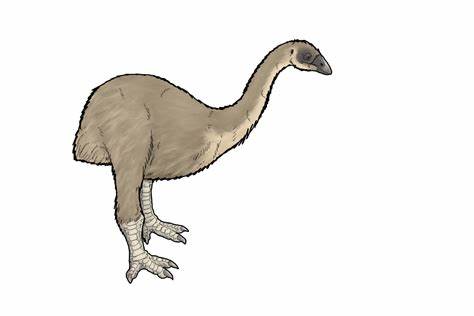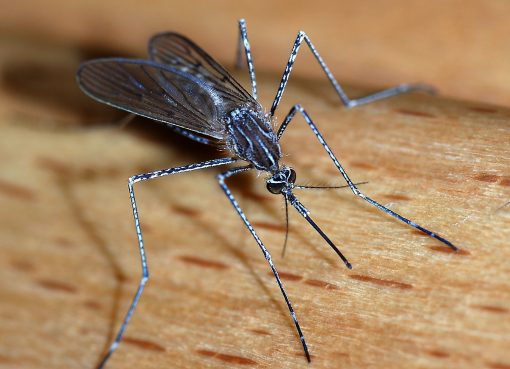Unraveling an ancient extinct bird
The phenotypic properties of many extinct species like Dinosaurs could be determined by sequencing the fossil DNA using Next Generation Sequencing (NGS) technology. Recently, researchers from multiple institutes have sequenced the complete genome of an extinct flightless turkey-sized bird, the little bush moa (Anomalopteryx didiformis). It is one of the nine known species of moa and was the smallest of the moa species (weighed about 60 pounds), that inhibited in lowland forests across the north and the south islands of New Zealand and got extinct almost 700 years ago. The distant living cousins of this bird were emu, ostrich, and kiwi. The DNA was extracted from the toe bone of a museum specimen. The team has recovered the complete mitochondrial genome, which is 17,043 bp with 249.9x depth of coverage and 900 megabases of nuclear genome at ~4 to 5× depth of coverage. Genomic analysis revealed that their closest relative is tinamous, a Neotropical bird group but not kiwis.
Sources:
- Edwards, et al. (2024). Science Advances, https://doi.org/10.1126/sciadv.adj6823
- https://www.sciencedaily.com/releases/2024/05/240528174347.htm
Lolamicin: A novel antibiotic against Superbugs
Multidrug-resistant bacteria are threat to animal and human health. Therefore, it is important to identify and design new drug molecules to fight against such superbugs. Recently, researchers from the University of Illinois at Urbana-Champaign, News Bureau have designed and developed a new antibiotic molecule called ‘Lolamicin’ that is effective against Gram-negative drug-resistant bacteria. Lolamicin acts as a Lol system inhibitor, a lipoprotein-transport system that is present in Gram-negative bacteria and it is genetically different between non-pathogenic and pathogenic bacteria. This drug was found to be effective against a panel of more than 130 multidrug-resistant clinical isolates which includes Klebsiella pneumoniae, Escherichia coli, and Enterobacter cloacae. The drug was tested in mice infected with drug-resistant bacteria causing acute pneumonia and septicaemia, and it was observed that when the mice were treated with lolamicin, 100% of them recovered from septicaemia and 70% of them recovered from pneumonia. However, lolamicin did not disturb the beneficial gut microbes as well as protected the mice from secondary infection of Clostridioides difficile. As there are few effective drugs against Gram-negative bacteria, lolamicin could be the drug of choice in future to combat drug resistant Gram-negative bacterial infections in human or animal.
Sources:
- Muñoz, et al. (2024). Nature, https://doi.org/10.1038/s41586-024-07502-0
- https://www.sciencedaily.com/releases/2024/05/240529144212.htm
A novel method to decontaminate eggs
Egg is a wholesome and the most nutritious food for humans, having high-quality protein, essential vitamins (vitamins A, B, D, E and K), and several minerals (selenium, phosphorous, zinc, and calcium). However, eggs also act as vehicles for many pathogenic microorganisms such as Salmonella, Escherichia coli (E. coli), Bacillus spp., Pseudomonas spp., Alcaligenes spp., Proteus spp., Listeria monocytogenes and many others. Therefore, decontamination of eggs during production, processing, preparation, and packaging is essential to have quality eggs from farm to table, from the public health point of view and to prevent the spread of foodborne diseases. The conventional egg decontamination methods are based on chemical and heat which damage the eggshell and degrade the nutritive value. Therefore, University of Saskatchewan (USask) have developed a nanotechnology-based electrospray system to decontaminate eggs. This system is based on engineered water nanostructures which are chemical-free, and it is a non-thermal approach for decontaminating egg surfaces. This novel technique can effectively decontaminate egg surfaces (contaminated with E. coli and Salmonella spp.) without damaging the eggshell and without losing any physical, chemical and nutritional properties of the egg.
Sources:
- Aminian, et al. (2024). LWT. https://doi.org/10.1016/j.lwt.2024.116151
- https://phys.org/news/2024-06-egg-decontamination-method-nutritional-quality.html
Status of clinical trials of Spanish tuberculosis vaccine
University of Zaragoza in collaboration with the Pasteur Institute, Paris have developed a live attenuated vaccine ‘MTBVAC’ against tuberculosis based on a Mycobacterium TB strain isolated from human. Spanish biopharmaceutical company Biofabri has taken the responsibility for clinical and industrial development of the vaccine. Accordingly, Biofabri has successfully completed phase-1 and phase-2 clinical trials. To evaluate the safety, immunogenicity and efficacy of MTBVAC, the phase-3 clinical trial has started in India in collaboration with Bharat Biotech. MTBVAC is a genetically modified live vaccine that contains all the antigens that are present in strains that can infect humans. MTBVAC has been developed for new-borns, adults and adolescents. The duration of immunity is longer than the available BCG vaccine. This vaccine will help to prevent TB in adults and adolescents as there is no effective vaccine for these age groups.
Sources:




